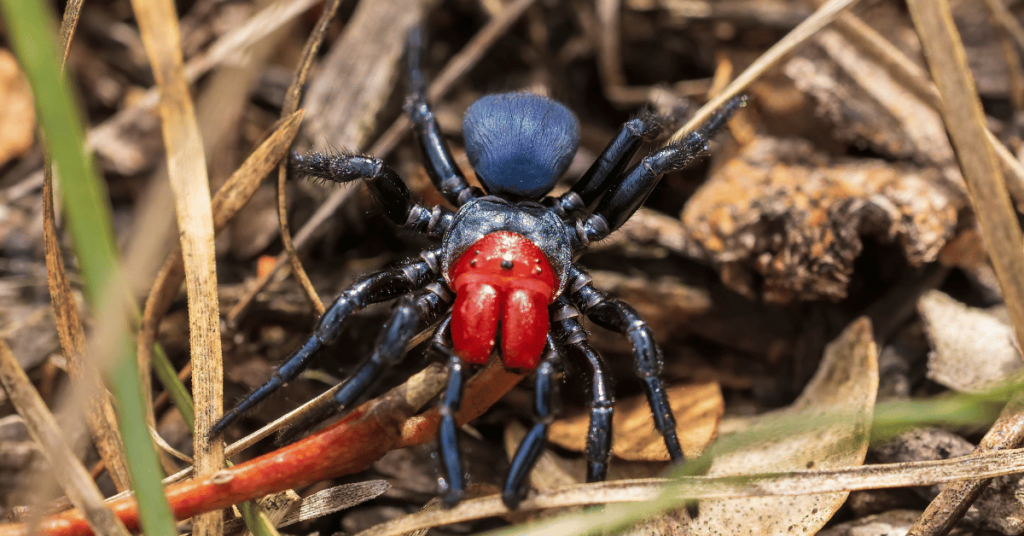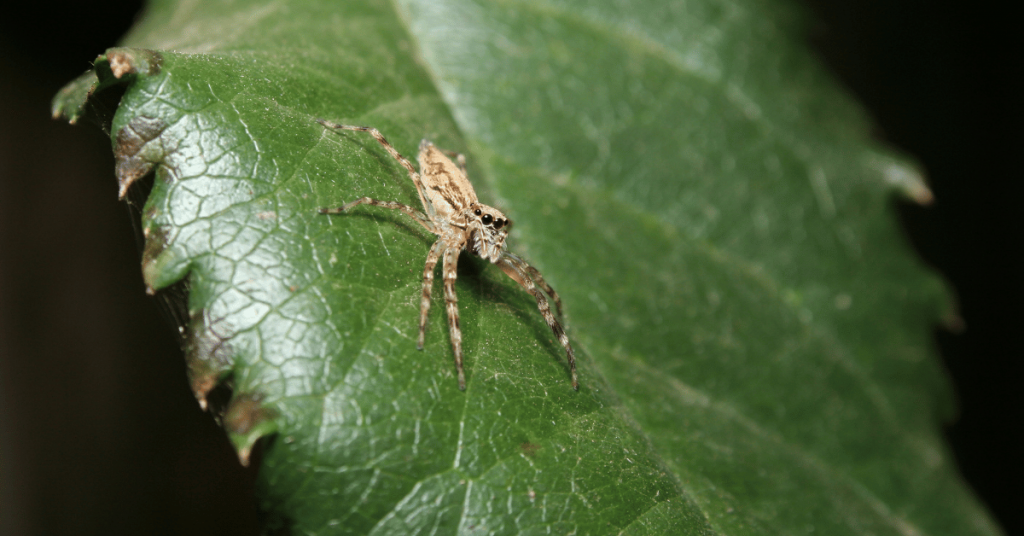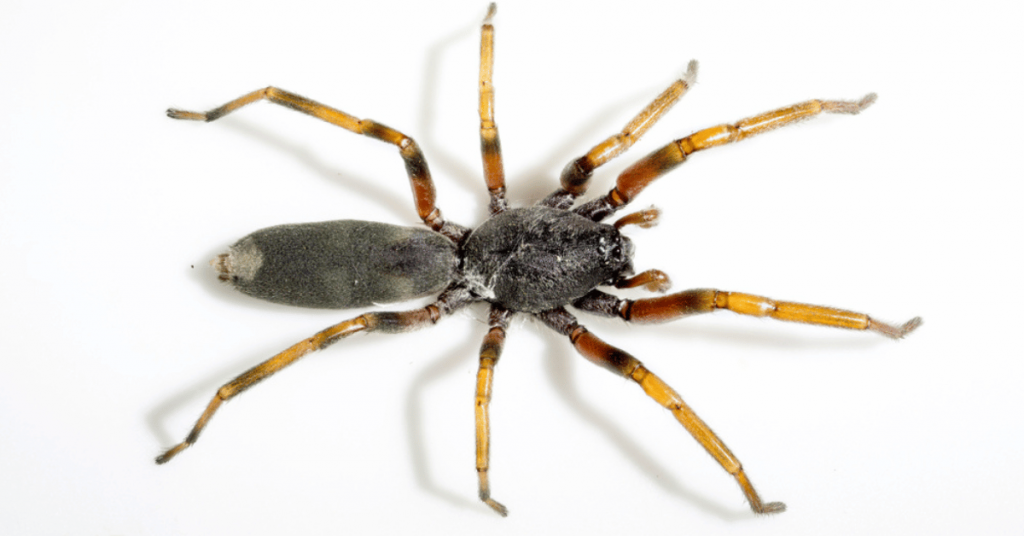You’re sitting on the patio enjoying a nice cuppa when you spot it – an eight-legged critter scuttling across the pavers. Maybe you were working in the shed and found a strange-looking critter under your tools and now you’re wondering one of three things.
1.What it was,
2. Is it dangerous
3. Are there more?
Before you smash it or call pest control, take a closer look. Brisbane is home to hundreds of spider species, some venomous and others harmless. With this guide, you’ll learn to identify the web-spinning suspects that share your home. We’ll cover the markings, behaviours and habitats of Brisbane’s most common creepy-crawlies. You’ll soon be able to identify the most common spiders in Brisbane.
How to Identify Common Spiders in Brisbane
If you spot a spider in your Brisbane home, don’t panic! Many common species are harmless to humans. In fact, in the Brisbane area, there are only about two that are a serious risk if you get bitten, those being the funnel webs and redback spiders. Still, it’s smart to always seek medical attention if you’re bitten by a spider and notice adverse effects.
The best way to determine if it needs removing is by identifying the type of spider. Here are some of the spiders you’re most likely to encounter and how to identify them:
The Huntsman Spider is a large, hairy spider that lives under bark and foliage. It is mostly grey and brown and can grow up to 15cm in size, though it is not dangerous to humans. Huntsmen are helpful in controlling insect populations.
By learning to identify a few of Brisbane’s most common spiders, you’ll feel more at ease sharing your space with these fascinating eight-legged creatures! But give the redback a wide berth – its bite is one experience you can do without.
The Most Common House Spiders in Brisbane
Huntsmen:
Appearance: Large, flat bodies with long legs; brown or grey.
Common Habitat: Found in homes, sheds, and gardens.
Venomous: Generally not considered dangerous to humans.
Size: Varied, with leg spans ranging from 2.5 to 15 centimetres.
Benefits: Control home insect populations
Temperament: non-aggressive, shy.
Daddy Longlegs:
Appearance: Small body and extremely long, thin legs.
Common Habitat: Diverse habitats, often in dark corners of buildings.
Venomous: Mild venom but not harmful to humans.
Size: Small, with a body length of about 0.5 centimeters.
Benefits: Control home insect populations
Temperament: non-aggressive, shy.
Female Redback Spider:
Appearance: Small, black spider with a distinctive red or orange stripe on the abdomen.
Common Habitat: Found in dark, sheltered areas, such as outdoor furniture and sheds. Often nocturnal.
Venomous: Yes, venomous, with potential medical significance.
Size: Females are about 0.5 to 1 centimeter.
Advice: Call for a pest inspection as soon as you notice one
Temperament: Reclusive. Defensive when agitated or when web is disturbed.
Male Redback Spider:
Appearance: Smaller than the female, with a slender body; light brown or gray, often with distinctive red or orange markings.
Common Habitat: Similar to females, found in dark, sheltered areas such as outdoor furniture and sheds.
Venomous: Yes, venomous, but less potent than the female. Bites are generally not considered harmful to humans.
Size: Approximately 3 to 4 millimeters in body length.
Golden Orb Weaver:
Appearance: Large, brightly colored, with a strong web.
Common Habitat: Gardens, forests, and bushland.
Venomous: Generally not harmful to humans.
Size: Females can have a leg span of up to 10 centimetres.
Benefits: Control outdoor pest populations
Male Funnel Web Spider:
Appearance: Robust, with a shiny, black head and dark, fuzzy abdomen.
Common Habitat: Moist, shaded areas; burrows in the ground.
Venomous: Yes, and considered dangerous, especially the Sydney funnel web. Male’s bite is more venemous than that of the female’s.
Size: Medium, reaching about 2.5cm
Advice: Organise a pest inspection after first notice
Temperament: More likely to roam after reaching sexual maturity. Aggressive only when threatened.
Female Funnel Web Spider:
Appearance: Larger and more robust than males. Shiny, black head and dark, fuzzy abdomen. No spurs on their legs
Common Habitat: Moist, shaded areas; burrows in the ground.
Venomous: Yes, and considered dangerous, especially the Sydney funnel web.
Size: Medium to large, with leg spans up to 5 centimeters.
Advice: Organise a pest inspection after first notice.
Wolf Spider:
Appearance: Stout, hairy, brownish colour, with lighter streaks. May be carrying egg sack on abdomen.
Common Habitat: Ground-dwelling in various environments.
Venomous: Generally not harmful to humans, but bite can leave necrotic lesions.
Size: Varies, but typically about 2.5 centimeters in body length.
Temperament: Generally non-aggressive, but attack if provoked.
St Andrews Cross Spider:
Appearance: Medium-sized, with a distinctive cross-shaped web.
Common Habitat: Gardens and wooded areas.
Venomous: Mild venom, not harmful to humans.
Size: Females about 1 to 1.5 centimeters.
Benefits: Control outdoor pest populations
Temperament: Non-aggressive.
Mouse Spider:
Appearance: Dark-colored, robust bodies. Males may have red-tinted head and blue abdomen. Women are mostly black.
Common Habitat: Burrows in the ground; found in various environments.
Venomous: Yes, but bites are rare and not typically severe. Can cause severe illness in children and pets.
Size: Medium-sized, with leg spans up to 5 centimetres.
Advice: Organise pest inspection if you spot these spiders in or around your home.
Temperament: Mostly non-aggressive, but defensive if threatened
Male Trapdoor Spider:
Appearance: Stout, with a trapdoor covering their burrow. Mottled markings on the abdomen.
Common Habitat: Underground burrows in soil.
Venomous: Mildly venomous, not considered a significant threat to humans.
Size: Varies, but generally small to medium-sized.
Female Trapdoor Spider:
Appearance: Larger than male, with lighter colouring. Rounder features.
Common Habitat: Underground burrows in soil.
Venomous: Mildly venomous, not considered a significant threat to humans.
Size: Varies, but generally small to medium-sized.
Temperament: Generally non-aggressive, reclusive.
Black House Spider:
Appearance: Dark brown or black with a robust body.
Common Habitat: Found in and around buildings.
Venomous: Mild venom, not lethal to humans but can cause swelling.
Size: Females about 1 to 1.5 centimeters.
Benefits: Indoor insect control.
Temperament: Generally non-aggressive, shy.=
Jumping Spiders:
Appearance: Small and compact, with a robust body and short legs.
Common Habitat: Diverse habitats, often found on vegetation or walls.
Venomous: Mild venom, not considered harmful to humans.
Size: Varied, with body lengths ranging from 0.5 to 2 centimeters.
White-Tailed Spider:
Appearance: Medium-sized, dark brown or grey spider with a distinctive whitish or cream-colored tip at the end of its abdomen.
Common Habitat: Found in homes, gardens, and bushland; often seeks shelter in dark corners and under debris.
Venomous: While previously believed to cause necrotic lesions, recent studies suggest their venom is not as harmful to humans. Bites may cause local pain and swelling.
Size: Body length ranges from 1 to 2 centimetres, with leg spans up to 4 centimetres.
Temperament: non-aggressive but will bite if agitated or startled.
Venomous vs Non-Venomous Spiders: How to Tell the Difference
Knowing whether a spider is venomous or not can help put your mind at ease. The good news is, most spiders found around Brisbane homes and gardens are harmless to humans. However, there are a few dangerous spiders to watch out for, especially if you live near bushland.
Some key signs a spider may be venomous:
Colouration: Brightly coloured spiders, especially those with red, orange, or yellow markings, are often associated with venomous species. However, this is a generalisation, and many brightly coloured spiders are harmless, like the golden orb-weaving spider.
Distinctive Markings: Some venomous spiders have distinctive markings that can serve as warning signs. For example, the red hourglass on the abdomen of black widow spiders or the red stripe on the upper side of the abdomen of some redback spiders.
Leg Shape and Body Structure: Highly venomous spiders like funnel web spiders often have robust bodies and stout, powerful legs. However, this isn’t a definitive indicator, as many harmless spiders can also have sturdy builds.
Web Structure: Some venomous spiders, like black widows, build irregular, messy webs in hidden locations, while others, like orb-weaving spiders, create well-organized, symmetrical webs. However, web structure alone is not a reliable indicator of venom toxicity.
Behaviour: Aggressive or defensive behaviour can be a warning sign. Some venomous spiders may exhibit defensive postures or react aggressively when threatened. However, many harmless spiders may also display defensive behaviour.
View this post on Instagram
Some venomous spiders to avoid in Brisbane include:
- The redback spider with its distinctive red stripe. Its bite can be painful but rarely lethal to humans.
- The Australian funnel-web spider. This is one of the world’s deadliest spiders. Its bite can be life-threatening, especially to young children or the elderly.
- The white-tailed spider. Its bite may cause a painful swelling or ulcer, though the severity of its venom is debated.
Most spiders you encounter will likely be harmless huntsman or garden orb-weavers. These spiders are non-aggressive and their bite is comparable to a bee sting. As a precaution, though, you should avoid handling any spider. If bitten by a spider with unknown venom, apply first aid and seek medical attention.
What to Do if You Get Bitten by a Spider in Brisbane
If you’ve been bitten by a spider, firstly, stop reading this and seek medical attention. Even if the bite is harmless, if you’re unsure or not confident about identifying the spider, it’s always safer to consult a medial expert.
Try to capture the spider that bit you so the medical professional can clearly determine if anti-venom is needed and if so, which to use. Most spider bites in Australia are not lethal to humans, though the bite may be painful or cause an allergic reaction.
Here’s what to do:
Seek medical attention immediately if you experience symptoms like nausea, vomiting, chest pain, difficulty breathing or swallowing. You could be experiencing a dangerous reaction to the venom and need antivenom.
For most spider bites, remain calm and follow these first aid steps:
- Apply a pressure immobilisation bandage and keep the bite below heart level. This helps slow the spread of venom.
- Clean the bite area thoroughly with soap and water.
- Apply a cold compress like a cold pack or cloth to the bite for 10-20 minutes every hour to reduce swelling and relieve pain.
- Keep the bite area below heart level to help slow the spread of venom.
- Take an over-the-counter pain reliever if needed.
See your doctor as soon as possible for an exam, diagnosis and treatment. They may prescribe antibiotics or other medication. You should also receive a tetanus booster if you’re not up to date. Most symptoms usually clear up within a few days, though the bite area may remain irritated for weeks.
Watch for signs of infection like increasing pain, redness, swelling, or pus in the coming days. See your doctor right away if an infection develops or your symptoms worsen or don’t improve.
Though frightening, most spider bites in Brisbane cause minimal effects and heal without complication. Seek medical care immediately for severe or worsening symptoms, but otherwise remain calm and follow first aid steps. You should recover within a week with proper care and over-the-counter medication.
Spider Identification FAQs: Your Top Brisbane Spider Questions Answered
How can I identify a dangerous spider?
The two most dangerous spiders in Brisbane are the redback spider and the funnel-web spider. Look for the following characteristics:
Redback spider: Black body with a distinctive red stripe, found in undisturbed places like underneath outdoor furniture, in sheds, etc.
Funnel-web spider: Large, stocky, black spider found in moist, sheltered areas. The male, in particular, can be aggressive, and its venom is dangerous to humans.
What to do if my spider wasn’t on this list?
Brisbane is home to hundreds of spiders. This list is a help-guide to the most common spiders Brisbane citizens deal with. For a more comprehensive list, we recommend this field guide. It details several sub-species of spiders and more reclusive species that tend to avoid urban areas, like the common water spider or the crab spider.
View this post on Instagram
What should I do if I find a dangerous spider?
If you spot a redback or funnel-web spider, be sure to call a professional pest control technician to ensure the problem is resolved completely. Home pest control measures are usually only good to kill what you can see, but if an infestation takes hold, it’s much more difficult to handle. Redback spiders breed around September to May and can produce thousands of hatchlings. Even utilising home bug spray and baits, most homeowners hardly make a dent in the population without professional assistance. Leaving an infestation of dangerous spiders to grow is dangerous and professional help should be called in immediately.
So there you have it, a quick guide to some of the most common spiders you’ll come across if you live in Brisbane or the surrounding areas. Hopefully now you can easily identify that harmless Daddy Longlegs in the corner or the venomous Redback under your BBQ. And if you spot a big, beautiful Golden Orb Weaver in your garden, you can admire its intricate web without worrying it’s going to hurt you. Just remember, spiders play an important role in our ecosystem and should be respected. If you have any questions or feel like you home is still being infested by non-dangerous spiders and wonder if they can be removed, call Cure-All Pest Control today for a free consultation.
With this guide, you can coexist safely with these fascinating creatures. And if you’re still uneasy, Cure-All Pest Control can help.

















